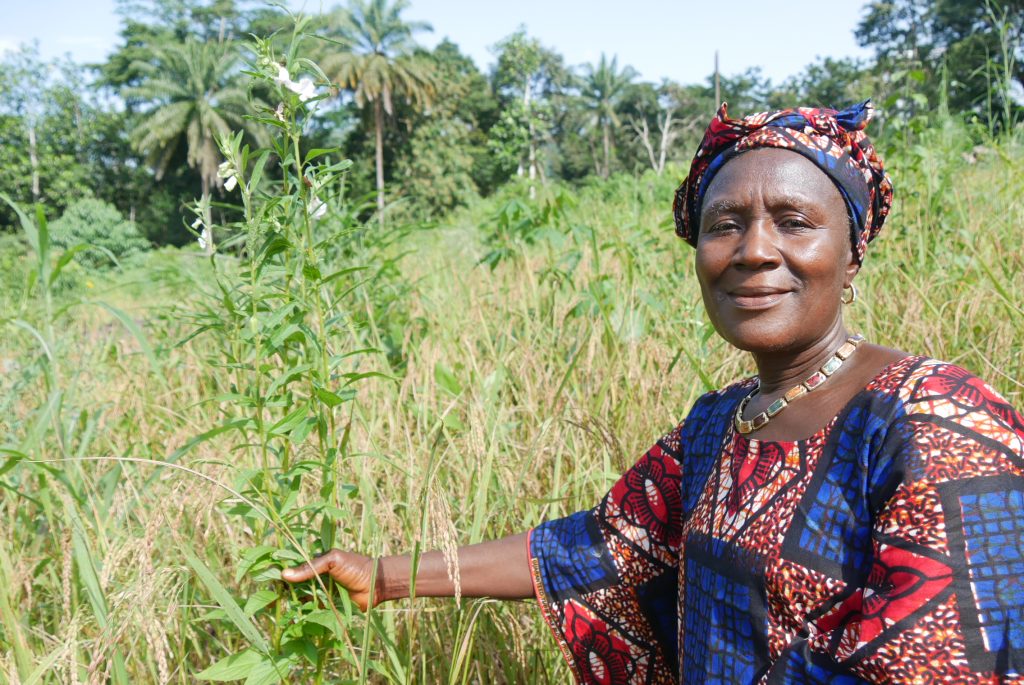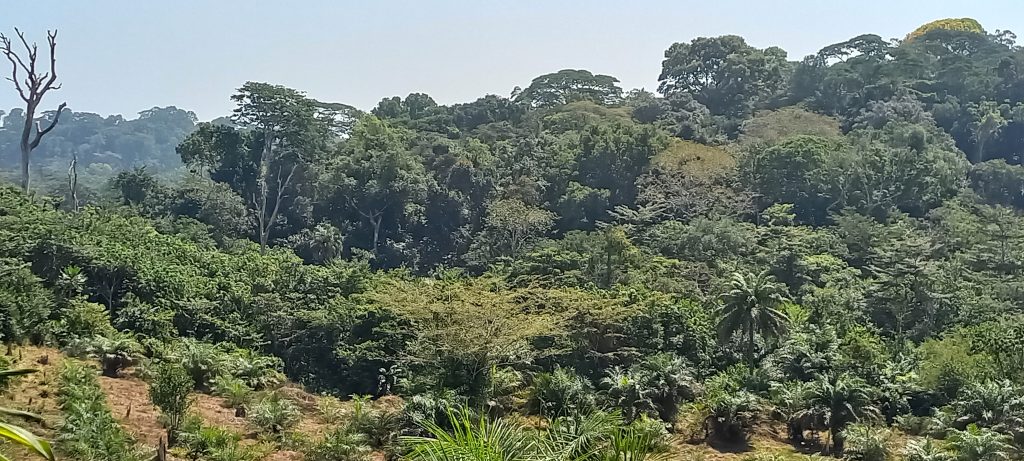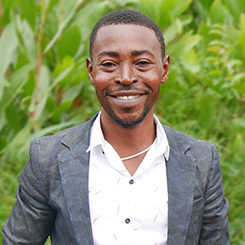Protection of the Common Good Saves the “Crying Hills” of Gaura Chiefdom in Sierra Leone

The PAPFor project aimed at tackling the problems of forest degradation through working with rural communities to create awareness on the importance of protecting the forest while at the same time promoting alternative livelihood options.
By Abdul Kaprr Dumbuya
Madam Katta Sannoh is a 58-year-old woman and a farmer living in Joru community, Gaura chiefdom in Kenema district, east of Sierra Leone. Madam Sannoh used to accompany her husband to set traps for bush meat while doing slash-and-burn farming in the community forest. Animals like porcupines, monkeys and duikers were caught by their daily traps.
“Sometimes when we had a good catch, our traps would kill up to 10 different species of bush meat, which we usually sell to take care of our family including the children’s school affairs”, Madam Sannoh explains.
In 2020, when the EU funded PAPFor project was introduced to Gaura chiefdom by the Conservation Society of Sierra Leone (CSSL), Madam Sannoh was among the many participants that were invited to one of the project’s first meetings at Joru. The PAPFor project aimed at tackling the problems of forest degradation through working with rural communities to create awareness on the importance of protecting the forest while at the same time promoting alternative livelihood options.
In addition, Madam Sannoh is the current Chairlady of the Gola Community Development Committee (GCDC) a structure that was constituted by Gola Rainforest Company Limited by Guarantee (GRC-LG) in all the forest edge communities in the Gola Landscape for members to represent their respective communities in discussions and arrangements related to community development and forest conservation.
During the engagement, she acknowledged to have been touched by the messages given to them by the project staff about keeping their forest protected from all kinds of degrading practices. “I was the first person to openly talk to my husband for us to stop setting traps and farming in the Gaya-yayei forest. We gave our forest the name, “Gaya-yayei” to mean, “the Crying Hill” because, there was always enough water for all the communities around to sustain from. But at that meeting, we realised we were responsible for the acute water shortage that we were experiencing even in the rainy season. Since then, my husband stopped his trap work, and I relocated my farming activities to another area close to the community”, Madam Sannoh recounts.
To address the perennial problems of knowledge gap and deforestation, CSSL embarked on sustained community engagements as well as radio programs hosted on community radios, and trained community and traditional leaders who successfully rallied local people around the idea of preserving the future of their unborn generations by conserving the forest.
In collaboration with the Ministry of the Environment and GRC – LG, the project successfully developed and implemented key activities that accomplished the establishment and operationalization of seven Community Forests and Land Use Planning and Mapping of the entire GRNP landscape.
“In addition to the provision of sustainable ecosystem services, CSSL also considers encouraging communities to preserve their community forests as a strategic way to mitigate climate change related crises. Surely, it is a smart move to help Sierra Leone adapt and mitigate the impacts of climate change,” says Edward Momodu Sesay, Head of Programmes at CSSL.

“My decision to do my farming activities elsewhere rather than in the forest was not because I now receive more post-harvest profit than in the past. That is far from it; in fact, I used to have bumper harvests from the forest in the tune of not less than One Million Old Leones (SLE 1,000,000) ($47 USD) from the produce that I always sell. For now, the highest I have ever received is Five Hundred Thousand Old Leones (SLE 500.000) ($23.5 USD) which is not sufficient to take care of my family. But I am motivated by the fact that, my decision is for the general good, and not just for me and my family”, Madam Sannoh discloses. This passionate revelation speaks volumes about the selfless voluntary work of representing her community in the GCDC.
The Gaya-yei Community Forest is a perfect example of forests that communities should rely on for provision of ecosystem services. In addition to non-timber forest products including herbal medicines, rattan and many others, the township of Joru and five other communities currently benefit from uninterrupted pipe-borne water sourced from the Gaya-yei Community Forest through a gravity system. Since its inception, the project has had a significant impact on about 34,704 local people across the six communities around the community forest in Gaura chiefdom.
“The PAPFor project has highlighted the impact that can be realized with the active participation of local communities to conserve forest resources”, notes Anthony Agbor, Africa Forest Coordinator at BirdLife International.
“While we remain hopeful of sustaining the gains left behind by the PAPFor project, CSSL looks forward towards consolidating our successes in the Gola Landscape through a reloaded community forestry PAPFor initiative in the near future”, concludes Patrick Dauda, Land Use Planning and Co-management Coordinator, CSSL.
CSSL PAPFor established seven Community Forest Management Committees or governance structures across six chiefdoms in the Gola Rainforest National Park Landscape and one Chiefdom in the Kambui Hills Forest Reserve Landscape.

Header image: Madam Katta Sannoh, a farmer and Chairlady of the Gola Community Development Committee © CSSL

“While we remain hopeful of sustaining the gains left behind by the PAPFor project, CSSL looks forward towards consolidating our successes in the Gola Landscape through a reloaded community forestry PAPFor initiative in the near future.”
Patrick Dauda, Land Use Planning and Co-management Coordinator, CSSL.